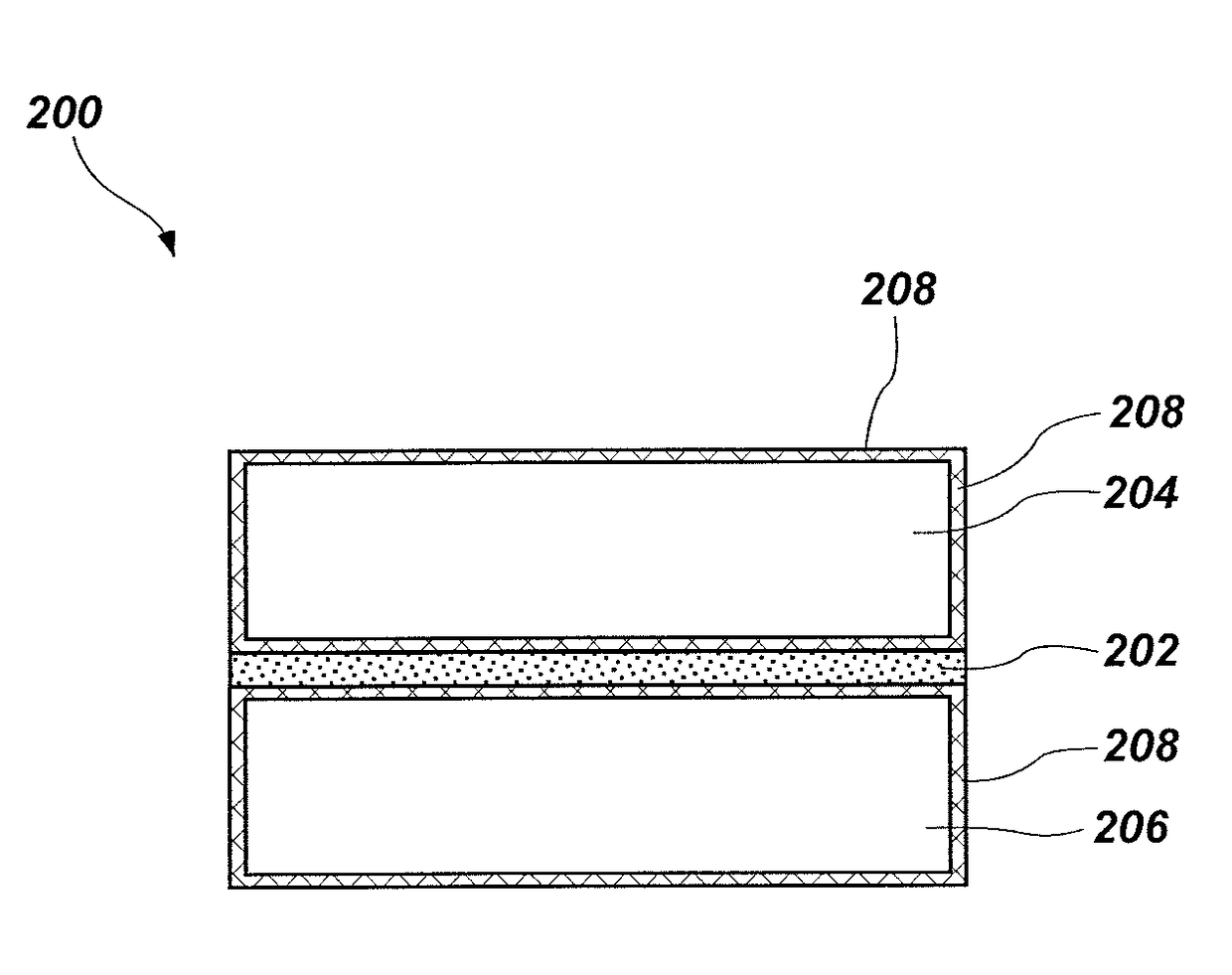Electrically conductive adhesives, assemblies including the electrically conductive adhesives, and related methods
a technology adhesives, applied in the field of electrically conductive adhesives, can solve the problems of exhaust plumes, space vehicles such as space shuttles, rockets, satellites, etc., to be exposed to hostile conditions characterized by high temperatures and turbulence, and to be exposed to extreme temperatures
- Summary
- Abstract
- Description
- Claims
- Application Information
AI Technical Summary
Benefits of technology
Problems solved by technology
Method used
Image
Examples
example 1
[0070]Electrically conductive adhesives formulated according to the methods described herein were tested against conventional electrically conductive adhesives in lightning strike tests. An electrically conductive adhesive including about 70 parts by weight bisphenol-F epoxy resin, 30 parts by weight resorcinol diglycidyl ether monomer, about 5 parts by weight Accelerator® 399 curing promoter, about 31 parts by weight Jeffamine® D230, about 15.5 parts by weight Jeffamine® D400, and about 216 parts by weight nickel nanostrands was formed.
[0071]The electrically conductive adhesive including nickel nanostrands was placed between a carbon composite panel and a metallic fastener (e.g., an aluminum end ring), such as would be used to couple adjacent composite panels of, for example, a cylindrical rocket case. The panel was subjected to a simulated direct lightning strike. Commercially available electrically conductive adhesives were also disposed between carbon composite panels and a meta...
example 2
[0073]An adhesion strength of the electrically conductive adhesive including nickel nanostrands was compared to an adhesion strength of commercially available electrically conductive adhesives. The adhesion strength was measured using a tensile butt test, wherein the electrically conductive adhesive was disposed between two composite materials that were pulled apart at a rate of about 0.5 inch per minute (ipm) until the electrically conductive adhesive between the composite materials failed. The bond line in each case was about 7 mils.
[0074]The electrically conductive adhesive including the nickel nanostrands exhibited a substantially greater tensile adhesion strength than conventional electrically conductive adhesives, while also exhibiting an electrical resistivity lower than the conventional electrically conductive adhesives, as illustrated in Table I below. The electrically conductive adhesive with the nickel nanostrands had the same composition of the electrically conductive ad...
example 3
[0075]A tensile strength and an electrical resistivity of different formulations of the electrically conductive adhesive including nickel nanostrands were measured at a bond line thickness of about 30 mils. In some embodiment, the electrically conductive adhesive further included an additional conductive co-filler (electrically conductive silver microspheres) dispersed therein. The test results are reproduced in Table II below, wherein percents are in volume percent of the resulting electrically conductive adhesive. The adhesive matrix material was a urethane in formulations 1 through 4 and the adhesive matrix material was an epoxy in formulations 5 through 12. The composition of formulations 1 through 4 are reproduced in Table III and the composition of formulations 5 through 12 are reproduced in Table IV below:
TABLE IINickelElectricalTAFormulationNanostrandsCo-fillerResistivityStrength12%15%0.1562 Ω· cm 208 psi26%15%0.1072 Ω· cm 261 psi310%15%0.0184 Ω· cm 281 psi415%15%0.0453 Ω· c...
PUM
| Property | Measurement | Unit |
|---|---|---|
| Fraction | aaaaa | aaaaa |
| Fraction | aaaaa | aaaaa |
| Percent by mass | aaaaa | aaaaa |
Abstract
Description
Claims
Application Information
 Login to View More
Login to View More - R&D
- Intellectual Property
- Life Sciences
- Materials
- Tech Scout
- Unparalleled Data Quality
- Higher Quality Content
- 60% Fewer Hallucinations
Browse by: Latest US Patents, China's latest patents, Technical Efficacy Thesaurus, Application Domain, Technology Topic, Popular Technical Reports.
© 2025 PatSnap. All rights reserved.Legal|Privacy policy|Modern Slavery Act Transparency Statement|Sitemap|About US| Contact US: help@patsnap.com



